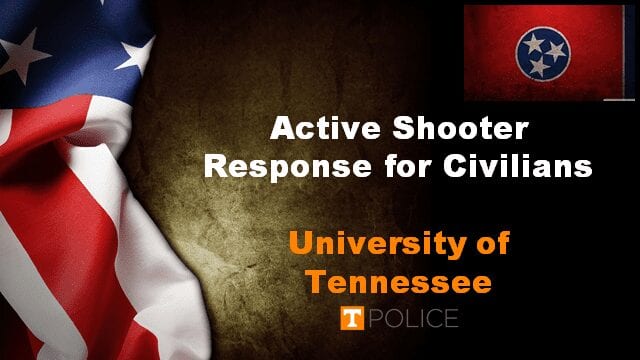Run, Hide, Fight: UT Police offer training for active shooter situations
UTPD offers classes to better prepare civilians for active shooter situations.

Active shooter training is just one of the many programs offered by the UT police department.
The training program consists of two parts: a class that lasts approximately 45 minutes to an hour and a drill that lasts another 30 minutes.
“Active shooter training is like car insurance,” said UTPD officer Michael Williams. “Everybody needs to have car insurance just in case. You hope you never have to use that insurance, but if you do, you’re glad you’ve got it. That’s how I see active shooter training.”
During the class, UTPD officers gave a presentation over the best strategies to use during an active shooter situation.
Williams explained the presentation describes the ‘Run, Hide, Fight’ protocol that is followed by UT and other universities.
“If you can’t run, your next best option is to hide and deny entry into the space. Get inside a room and barricade the door and try to make it more difficult for somebody to get inside. Turn off the light, silence your phone, remain as quiet as possible,” said Williams.
If running or hiding are not options, the next step is to fight.
“When you fight, you need to give everything you’ve got because that person came there to kill you. Anything goes because you’re trying to survive,” said Williams.
Williams explained that the more people that are fighting back, the more successful the chances are at defeating the shooter.
Once the presentation is over, participants can choose to simulate an active shooter situation to test their new knowledge. While the drill is optional, participants must go through the presentation first in order to know the right steps to take in the drill.
Participants act and behave as if it is a normal workday during the drill. A whistle is used to simulate the sound of gunfire.
“While an officer walks around blowing the whistle, the participants are expected to follow the ‘run, hide, fight’ protocol, minus the fight part,” said Williams.
Williams said that most people say the drill was beneficial for them because they had a chance to apply the strategies they learned during the presentation.
“The drill also gives people good ideas such as double-checking the door is locked,” said Williams.
Active-shooter training has been offered for years. In 2019 alone, UTPD has conducted 20 training sessions and has taught approximately 980 people.
The creation of this training program was in response to the number of active shooter events that started taking place a few years ago across the country.
Williams said there is a correlation between the number of requests for the training program after major shootings.
“A lot of times we will see an increase in requests for this program after a shooting. It’s on people’s minds more and they want to be more prepared,” said Williams. “We want people to be prepared as possible. While the possibility of someone being involved in an active shooter situation is small, the possibility is still there. We want to increase people’s chances at survival.”
Any organization or department on campus can request a training program through the UTPD website or by sending an email to the UTPD general email. Officers from the Community Relations Unit will conduct the training at a place, date and time that works best for the organization requesting the program.
Scott Poole, dean of the College of Architecture and Design, said the training is a valuable program on UT’s campus and offers important strategies.
“The active-shooter training offered by UT Police Department is valuable for our campus,” said Poole. “In the class, the experienced officers share important strategies that can save lives during an active-shooter situation, and they remind us of ways to stay safe and use resources, such as the LiveSafe app.”
Featured image courtesy of the UTPD
Edited by Christian Knox, Maddie Torres and Ainsley Kelso

